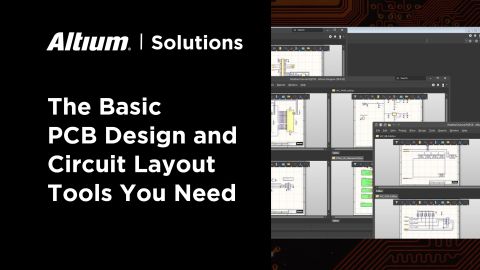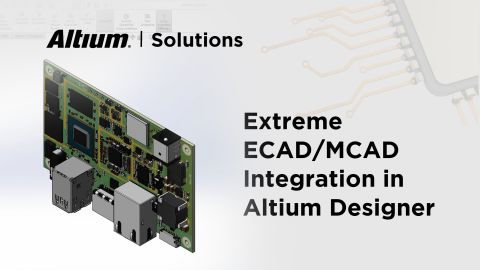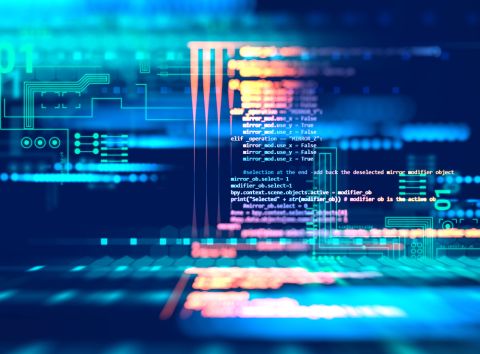How Does the Cloud Change the DFX PCB Design Process?
Let’s face it: Engineers rarely design modern board systems on their own.
However, it didn’t use to be that way. Not long ago, engineers primarily focused on form, fit, and function. Addressing those requirements was extremely difficult on its own. Constraints on cost, power, or part availability were secondary concerns. The prime directive was to get it to work.
Fast forward to today, and the focus has flipped. It is a given that board systems will fulfill all those core design requirements, despite their complexity. The real focus for competitive differentiation is now on traits and characteristics that have traditionally been enterprise concerns.
The increased prioritization of enterprise constraints carries some serious implications for engineers. Most don’t have the domain expertise to assess board systems for cost, manufacturability, serviceability, and more. Thus, the big change is to get experts in each of those fields involved early in design to incorporate their feedback or so the team can collaborate on conflicting requirements.
How exactly does that collaboration happen?
In this post, we’re going to compare and contrast two different approaches. In the first, email and file attachments enable collaboration. In the second, Cloud-based applications are the solution. Let’s follow the steps in the process.
Sharing Access to the Design
No one can give feedback on a design until they can access it. So, providing access is the first step in the process.
Today, it is extremely common to share board designs via email. You can export your design from your ECAD software, attach it to an email, and away it goes. However, that is where the issues start. As we discussed in our last post How Collaboration Changes with the Cloud, emails and their file attachments are particularly problematic.
- Emails can be deleted, buried, or lost.
- Emails are not secure for intellectual property.
- Email attachments can become outdated the instant they are sent.
- Email attachments may require specific viewer software, which the recipient may not have.
As you can see, merely sharing the design successfully with others is fraught with shortcomings. In contrast, when we talk about sharing designs through a Cloud-based solution, many of these flaws are addressed.
- The engineer can send an invite to others, controlling the type of access and changing rights to the design.
- Designs shared through Cloud-based solutions are not inherently exposed to security risks the same way emails are.
- Once stakeholders log in, they can view, manipulate, and even change the design if they have those permissions. No special application is necessary.
- Unless explicitly set to a specific version by the engineer, access via the Cloud-based solution always serves up the latest design. There’s no chance of working against out-of-date information.
Now, Cloud-based solutions aren’t bullet proof. If you have an angsty employee, they can still improperly expose your intellectual property. However, the big advantage of this change is it closes off the risks and problems inherent with emails and their attachments.
Empowering Feedback on Designs
The purpose of collaboration isn’t merely to provide access to the design, but to gather feedback on it from other stakeholders. So far, we’ve talked about the first and not the second.
So how do you get feedback with email and attachments? You get email replies with marked up or changed designs. Again, this is simple and easy, yet it inherently has a number of flaws.
- Some feedback may be in the body of the email. That feedback lacks the context of the design. It may not be obvious how those comments apply. Clarification requires extra effort and potentially human error.
- Comments and suggestions in the context of the design attachment, if the application the stakeholder allows such feedback, is valuable. However, what happens when you get marked up designs from two or even ten different stakeholders? Engineers have to merge this information back into a single version of the design. That, again, takes tremendous manual effort and likely some discussions to clarify how it all applies.
All of this changes when collaborators use a Cloud-based. While viewing the design, stakeholders can embed their feedback directly on the design. Even more interesting is that multiple stakeholders can provide feedback on the same design simultaneously. That inherently addresses some of the flaws of the email and attachments approach.
- Feedback is always in the context of the designs.
- Stakeholders are limited by which application they have installed on their device.
- There is no need to consolidate feedback. All suggestions and comments are made against the design in the Cloud.
- Engineers have some control over which stakeholders can see other stakeholder’s feedback. This could lead to some powerful interactions where two stakeholders collaborate on the design with the engineer merely as the enabler.
When comparing these two approaches, the main difference lies in the reduction—or even elimination—of manual effort on the part of the engineer as well as human error. Given the workloads and tight schedules for board systems development, that’s a good thing.
Takeaways
Design collaboration—whether with other engineers or with other stakeholders in development—is a scenario in which Cloud-based solutions truly shine. If you’re spending an inordinate amount of time getting everyone on the same page or collating feedback, then your organization might seriously benefit from a cloud-based ECAD solution.












